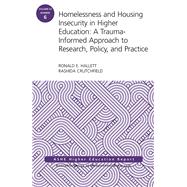This volume explores how homelessness intersects most social issues that marginalize individuals and negatively influence postsecondary completion, including poverty, foster care, and LGBTQ+ discrimination. As becomes evident, students experiencing homelessness should be considered in conversations about equity and access. For these students, completing some form of degree or certification beyond high school is a vital step in achieving future stability.
Topics covered include:









